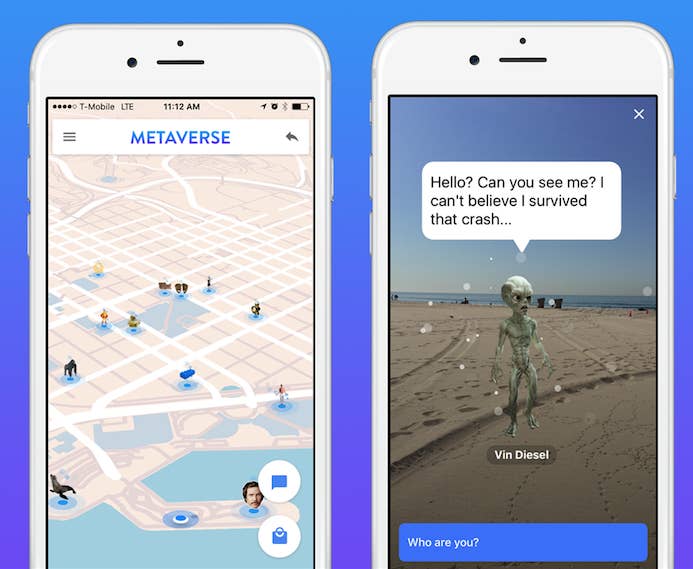
When Pokémon Go incited mass augmented-reality hysteria this summer, one big question that emerged was whether the game’s success would usher in an era of AR applications, or whether enthusiasm for the genre would fizzle. Ex-Googler Dmitry Shapiro is betting that we’ve only seen the beginning of experiences that overlay the digital on the physical world. He's debuting an app that allows anyone to create Pokémon Go-style games within it, and he’s raised $2 million from the likes of former Disney CEO Michael Eisner and venture capital company Greylock Partners to push it forward.
The platform, called Metaverse, can host an unlimited number of AR applications. Anyone can make games or other experiences inside it by using a builder to create Pokémon-style “experiences” and dropping them onto a map that hews to the real world. You can quickly build these worlds, and you don’t have to know how to code, though the creation of more elaborate uses will demand more effort.
Just like with Pokémon Go, you walk up to experiences inside the Metaverse and tap them to interact with them. But unlike Pokémon Go, the Metaverse won’t be limited to one “world.” Its founder, Shapiro, wants it to be a home for multitudes of user-generated scavenger hunts, interactive stories, and even AR worlds directing you to things like public bathrooms. Users can sort through and hop in and out of these worlds at will.
“YouTube made it trivially simple for people to publish video,” Shapiro told BuzzFeed News in an interview. “You could think of this as being a YouTube for interactive experiences.”
The point: Make it easy for anyone to build these experiences, freeing them from the effort needed to develop AR technology, and hopefully they’ll create stuff people want to explore.

According to Google Trends, interest in both augmented reality and Pokémon Go has steeply dropped off since the Pokémon craze hit its peak in July. So Metaverse might be fighting an uphill battle. But in a best-case scenario, it could create the framework from which more successes like Pokémon Go emerge. “The last great platform has dramatically changed what we see on our phones in front of us,” said Greylock VC Josh Elman, referring to mobile operating systems. “I believe the next great platforms can be to change what we see in the world around us.”
And Eisner, in an emailed statement, said he’s particularly excited about the interactive storytelling that can be done within the platform. “Metaverse is a new medium, potentially the invention of a new genre of interactive film, and I believe that incredible stories will be told on this platform.” he said. "The opportunities that exist for storytellers large and small are staggering.”
Metaverse already demonstrated how part of its app works with cash scavenger hunts in San Diego and the LA area this fall. And for Halloween, the app created a world overlaid with spooky experiences that you can walk up to and interact with. But Tuesday, the platform is opening up its key product, the one that allows anyone to build their own worlds, or “dimensions” as it calls them.
The dimension builder is fairly straightforward, allowing you to upload your own objects or pick from the app's built-in set, which ranges from Donald Trump to an astronaut. Then you can set the objects to say certain things and offer multiple choice responses for users that tap on them. Shapiro said his niece and her friends are using the platform to drop characters on each other’s houses, which then relay messages when tapped. It’s an example of the wide array of uses that you can imagine for the platform.
Though it’s still an open question whether AR will take off, Shapiro is not shy about his ambitions. “I’m not trying to build a new Google Maps or Waze,” he said. “I’m trying to build a new fundamental platform that will dramatically increase the things that regular consumers can do with technology.”
